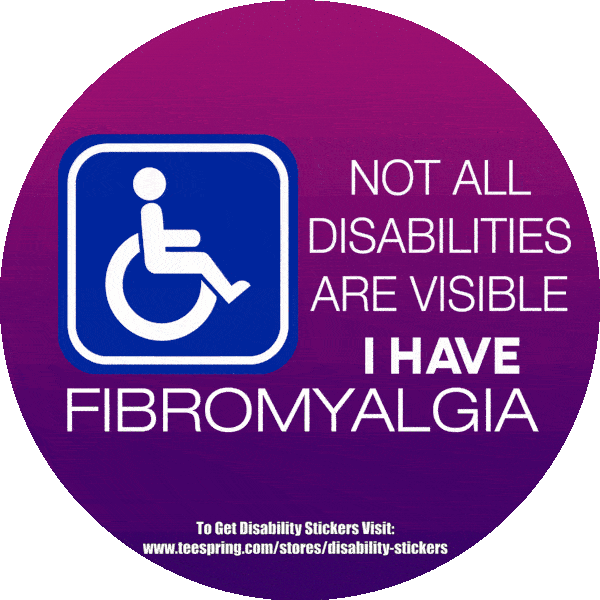About 5 million Americans, most of whom are women, live with fibromyalgia. And while the root causes of the disorder haven’t yet been clearly identified, research has turned up some differences in how people with fibromyalgia acknowledge pain which may help to shed light on who is more liable to develop it. Fibromyalgia symptoms are rooted in a dysfunction in the way pain is processed in the brain.
Fibromyalgia patients have been shown to have lower levels of brain chemicals that inhibit pain signals, including serotonin and norepinephrine, as well as higher levels of brain chemicals that cause pain signals, including substance P and glutamate. These chemical imbalances may clarify why people with fibromyalgia find changes in temperature, light, and pressure on their skin hurting whereas others do not.
Another avenue of exploration is the impaired stress response that appears to characterize fibromyalgia. Researchers are looking at the ways in which the stress hormone cortisol is processed differently by people with fibromyalgia, as well as other health factors, such as difficulty regulating blood pressure. When you hurt, your brain’s the first to know it. Nerve signals move from the trouble spot on your body through your spinal cord to your brain, which senses these signals as pain. It’s a warning that something’s wrong.
As you heal, the pain gets better, and in time it goes away. But if you have fibromyalgia, you hurt all over even when you’re not sick or injured. And the pain doesn’t go away. Some doctors believe they know why: a fault in the way your brain and spinal cord grip pain signals. When you have fibromyalgia, you may have more cells that carry pain signals than normal. And you may have fewer cells that slow pain signals down. This means similar to music blasting on a radio your pain quantity is always turned up.
The result is that minor bumps and bruises hurt more than they should. And you may feel pain from things that shouldn’t hurt at all. Doctors aren’t sure why some people get fibromyalgia. There is possibility of more than one cause. Hormones such as serotonin, norepinephrine (noradrenaline), and dopamine help your body to process pain.
In the brain and nervous system lower-than-normal levels of these hormones can interrupt pain signals and exaggerate your sensitivity to them. There’s no one medical specialty that treats fibromyalgia. Some family practice doctors or internists (internal medicine specialists) can recognize and manage the condition.
Fibromyalgia can run in families. It’s probable that there’s an anonymous genetic anomaly that increases certain people’s risk for the state. Certain genes may control the way the body regulates pain responses. On the other hand, they may activate the onset in people who are by now at risk for it by changing the nervous system’s reaction to pain.
Women are much more likely than men to develop fibromyalgia (nearly 90 percent of fibromyalgia patients are women), although the exact reason for this gender difference has not been fully established. Here is a somewhat increasing danger of being diagnosed with fibromyalgia as you get elder. Most people are diagnosed between the ages of 20 and 50.
Worldwide 3 to 6 percent of the population is thought to have fibromyalgia, but close to 8 percent of those who are 80 years old is suffering from the condition. People with fibromyalgia often have problems sleeping well. These sleep problems may contribute to the fatigue and fibromyalgia pain they experience. Distressed sleep and chronic pain can become a ferocious cycle, each making the other worse.
The danger for developing chronic pain and fibromyalgia symptoms is repeated physical trauma people undergo at manual labors. Functioning in the heat, squatting for extended periods (over 15 minutes), and pulling very heavy weights top the list of probable triggers. People who aren’t physically energetic, this condition is greatly common in them.
Exercise is one of the best treatments for fibromyalgia you already have. It can help turn the pain volume down. Mood disorders and fibromyalgia are closely related. Mental health conditions such as depression and anxiety stem from the same chemical imbalances linked to fibromyalgia. The strain of living with chronic pain can also cause depression. Also, depression can make your pain worse.
It’s mostly accepted as true that the mind and body are connected, and one will suffer when the other does. The Mayo Clinic says that emotional trauma (as well as physical trauma) can raise your chance of developing fibromyalgia. If you’ve been under prolonged psychological stress, or something very upsetting has occurred that has turned your mental state upside down, you can actually start to have physical symptoms. Meanwhile, the clinic says a car accident (or other type of injury) can also trigger the disorder.
Certain types of prescription medication can help to reduce symptoms for some people, but combination treatments work best for fibromyalgia. Physical work out is the most successful treatment for fibromyalgia. Gentle stretching and aerobic exercise can relieve pain and also prevent deconditioning, or getting weaker from lack of exercise. Exercise can also improve sleep.
Working with a physical or occupational therapist can be helpful in getting started with an exercise regimen. Some other daily life approaches that may improve fibromyalgia symptoms include anxiety reduction, not smoking, following a healthy diet, losing weight if you’re overweight, and establishing good quality sleep habits.
Lets put this sticker on our cars
Click Here to get this disability sticker for your car bumper
References:
- Are You at Risk for Fibromyalgia? By Madeline R. Vann, MPH via EveryDay health
- What Causes Fibromyalgia? via Web MD
For support and Discussion join the group “Living with Fibromyalgia and Chronic Illness”
Subscribe to our website for Email notification of our new Posts. Like and Follow us on Facebook. Swipe Left to Read more on Fibromyalgia or Click Here …

